Click to view our Accessibility Statement or contact us with accessibility-related questions













Using a Mechanical Keyboard on Mac

search
close
Sort by: Newest
keyboard_arrow_down
Evshrug
3772
Community
Mar 23, 2023
Just to supplement this article, I used trial and error to find some of the function key shortcuts for MacOS in my Drop ENTR review! https://drop.com/talk/62256/keys-to-success?utm_source=linkshare&referer=Z2JXCA
Here’s what I found:
Hot keys for controlling the system or media are not labeled on the keys. Drop includes a post card listing the default Fn + Key combos that will do Windows things, but for Mac I had to explore and memorize. You can change the key input in Mac System Preferences and pull up/swap the alt (option) keycap with the Windows (command) cap if you want to make the keys match your muscle memory. The Media controls are the same for Mac as on the Post card for windows but there’s some odd ones as well. I like that you can control four levels of the keyboard brightness, or turn it off. Here’s the default ones I’ve found so far:
Fn + F4: Print (either a document you have open, or highlighted in Finder)
Fn + F8: Duplicate (in finder)
F11: Show Desktop
F12: Show Dashboard (old Widgets feature)
ScrLk: F14 (lowers screen brightness)
Pause: F15 (raises screen brightness)
Fn + Up Arrow: Raise keyboard backlight brightness
Fn + Down Arrow: Lower keyboard backlight brightness
Genjokoan
0
Keyboard Club Member
Jun 18, 2022
Interesting. What Mac & OS is that image from? I cannot recall ever seeing Modifier Keys "Function" on any Mac, ever. And I am going all the back to 1984. :D

HoffmanMyster
2912
Community
Jun 21, 2022
GenjokoanM1 MacBook Pro 13-inch running Monterey. I don't have much experience pre-Big Sur, so not sure how this differs from the Catalina era.

Evshrug
3772
Community
Mar 23, 2023
GenjokoanI still have an iMac running Mojave (and a new M2 Mac Mini Pro running Ventura), let me know if looking at my settings and sharing screenshots might help you :)
(Edited)

whoatacos
100
Jun 14, 2022
Karabiner Elements allows you to remap keys like this as well, also on a per-keyboard basis. It's a bit more detailed and allows you to assign functions, macros, etc to a single key.

HoffmanMyster
2912
Community
Jun 21, 2022
whoatacosInteresting! Thanks for the heads up. Took a quick glance and it seems like a really feature-rich option for customization. I'll need to tinker with it a bit more and will likely add it as a more advanced option.
PRODUCTS YOU MAY LIKE
Trending Posts in Mechanical Keyboards

TiKiToPia
Keyboard & Drink
Playful set
This set goes better for keyboards meant for personal-casual setups as opposed to office-work environments.
Apr 14, 2024

Keyboy
help Momoka zoo 65
What is the diameter and length of the screws for the momoka zoo 65
Apr 14, 2024
jtgas23
ALT V2 not detected with Drop Keyboard Configurator
Hi, This is my first non-mac keyboard. I was under the impression that this would work out of box with with mac desktop however I am having issues getting the ALT V2 detected with the keyboard configurator software. The keyboard is plugged in and powered on. Apologies if this is very basic or if I have used incorrect language describing my issue, I don't have experience with this. Thank you
Apr 13, 2024
TheGreyFirewlf
Upgrading Keyboard
Hey everybody, I have this E-Yooso Z11 keyboard which i want to upgrade, im new to keyboards and modding, any suggestions? https://www.amazon.com.mx/gp/product/B09TT887MB/ref=ppx_yo_dt_b_search_asin_title?ie=UTF8&psc=1 this is where i bought it from and idk what can i upgrade, im thinking to upgrade switches but idk what else can i find to upgrade from it, i might change the keycaps but idk where to start. I would appreciate the help to every extent. Hope u doing great and may the keyboard lord bless you
Apr 11, 2024

HoffmanMyster
From Art to Artisan
Before launching any product, there are many designs, concepts, and ideas that pass between teams before arriving at a final design which makes its way to your computer screen and, eventually, desk. This is no more true than when considering possibly the most "art"-forward aspect of the mechanical keyboard hobby—artisan keycaps. It should be obvious that a lot of planning and artistry goes into crafting these literal pieces of art. We don't often get a chance to see behind the curtain, though. So, let's take a closer look at the upcoming Drop + Dwarf Factory Lord of the Rings Rohan Artisan Keycaps. Before any resin is spilled, Middle Earth (the entity that licenses the Lord of the Rings IP) needs to approve the concepts based on concept art provided by Dwarf Factory. We connect with DF to coordinate on the topic and subject matter—in this particular case, additional Rohan-themed designs—to be sure that the concepts match with overall direction, whether that be pairing up with a...
Apr 10, 2024

Ikarianpc
My Kingdom for Smooth ABS SA Keycaps
Every time I build a new keyboard, I go hunting for keycaps. And every time I go hunting, it eventually devolves into a desperate search for SA (or equivalent) profile keycaps with a smooth finish. SA is the ultimate profile, IMHO, and they're relatively hard to come by. Signature Plastics, which is where a lot of SA sets come from like the T0mb3ry SA Carbon set (they might actually hold the trademark on the SA profile if I'm not mistaken), is reportedly going through some management/ownership struggles (last I heard, they're looking for new ownership), and along with apparently the rest of the industry, they seem to be neglecting this superior keycap profile in their own stocks. If you order direct from them, they have a couple themed sets in stock (maybe), but generally you can have any color you want, as long as it's black or white. Drop carries a fair number of MT3 profile sets, which are very similar to SA. But just like SP's SA-P profile, they're made with a different...
Apr 10, 2024

HoffmanMyster
DCX vs DCD vs DCL - Drop’s Keycap Profiles Explained
We’ve covered the basics of keycap profiles before—spherical/cylindrical, sculpted/uniform, etc. One thing that has come up more and more over the years as we’ve expanded our portfolio of offerings here at Drop is the distinction between some of our similar profiles. Specifically, what is the actual difference between DCX, DCD, and DCL? Cylindrical Profiles To recap the previous article on the topic, one of the most basic ways to separate various keycap profiles is by shape (cylindrical, spherical, or flat). DCX, DCD, and DCL are all cylindrical profiles. The most famous cylindrical profile is Cherry profile, as defined by the original manufacturer of the keycaps—Cherry. GMK now owns those tools, and as such, only they can technically claim to produce “Cherry” profile keycaps. Similar keycap profiles are often called Cherry profile colloquially, but are in actuality slightly different. For the sake of not splitting hairs, all of the cylindrical profiles discussed here are...
Apr 9, 2024
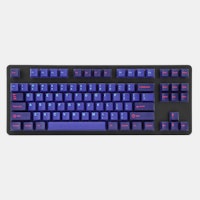
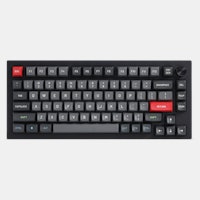
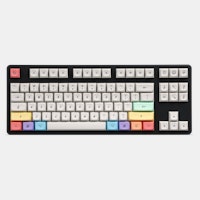
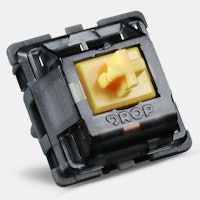
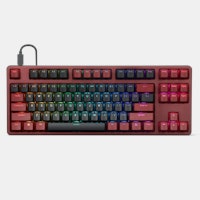
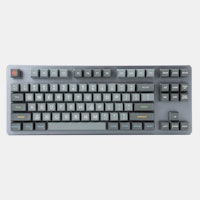

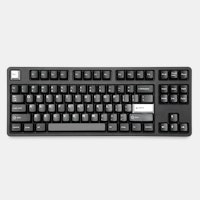
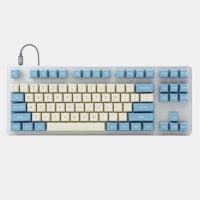

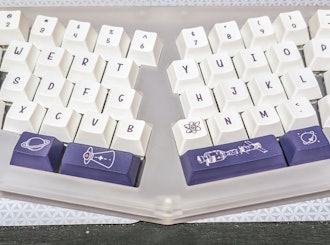

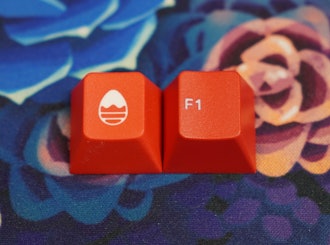
Solution 1 - Remap within System Settings on Mac The easiest and most universal solution is to change the mapping within System Settings on Mac; software remapping will work with any keyboard, regardless of whether the keyboard is compatible with popular remapping solutions like QMK or VIA. This works on a per keyboard basis, meaning that the changes you make to your mechanical keyboard will not affect the layout of your laptop and/or Apple-branded keyboard.
- Open the macOS Keyboard settings (Spotlight Search “Keyboard”, or System Settings -> Keyboard)
- Click “Modifier Keys…” (lower right)
Remap the Cmd and Opt keys as desired (left key description is the physical keyboard, drop-down menu selection is the software action to map)Solution 2 - Remap the keyboard itself This is significantly more difficult (though made easier and easier thanks to community tools - don’t be scared away if it interests you) and requires a keyboard that can accommodate custom mapping (Drop CSTM65, CSTM80, Alt, Ctrl, and Shift are easily remapped, while Drop Entr cannot be remapped—use Solution 1 above for Entr). The downside to this solution is that the key remappings are hard-coded into the keyboard logic itself, so if you move the keyboard back and forth between Mac and Windows machines, the layout will now be reversed on the Windows computer. Hardware remapping to swap Cmd and Opt is really only the ideal solution if you only use Macs and you are also interested in remapping other keys which cannot be configured in software (most common in a more custom layout board). I won’t be going into detail about the remapping process here, as it is more advanced and each method has its own detailed instructions already. Drop Configurator
Instructions for Drop Alt
Instructions for Drop Ctrl
Instructions for other keyboards
How to remap the Function keys The question of how to remap Function keys has come up a lot over the years, so it’s worth addressing specifically. This functionality is not built into macOS itself. One of two workarounds is required—either remapping the keyboard itself, as described above (Solution 2 for swapping Cmd/Opt), or using software to remap. Software is by far the easiest and most universal solution here. It works for any and all keyboards, including our Entr and Lord of the Rings keyboards.